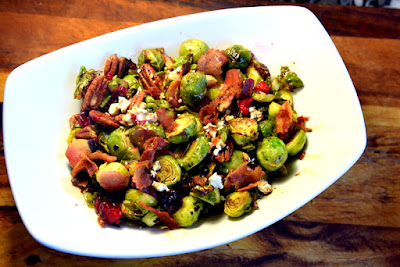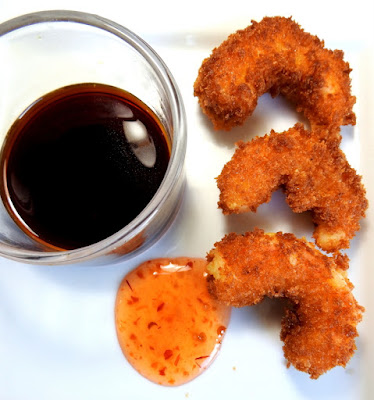Recently, I wrote a column about finding treasure in trash. I was at my local recycling center and found a bunch of cook books THROWN AWAY in the bin for paper. (The library is less than 1/2 mile away and these books could have been easily dropped off there, but ... ) Anyhoos, I came home with a bunch of books, one being "The Food And Drink Of Mexico," which contained a handwritten recipe for Tamale Pie tucked inside. Naturally, I had to make the Tamale Pie and here's the post about it:
Tamale Pie. I consider the dish neither tamale nor pie, but more of a comfort casserole. At any rate, it was good and I recommend you try it.
On the Outer Banks Voice's Facebook page linking to my column, there was a comment from a reader asking for a recipe for pozole, so I thought I'd give it a go. And that's the circuitous way I got to pozole and New Year's.
What is pozole, you ask? It's a traditional Mexican soup made with hominy, a meat (usually, pork), dried chile peppers, and seasonings, and toppings.
What is hominy, you ask? Hominy is corn. Specifically field corn which has been nixtamalized. Field corn, as opposed to sweet corn, is harvested when the kernels are hard on the outside and starchy on the inside. It's cow corn, generally used for feeding livestock, or for making industrial products (ethanol, pharmaceuticals, plastics), and for making moonshine. Sweet corn is what we eat, picked when the kernels are tender on the outside, sweet and juicy on the inside, and ready to eat. As for the nixtamalization, that's the process where the whole kernels of corn are soaked in a lye solution, then rinsed, several times. This removes the hulls, plumps up the kernels, turns them tender, improves the nutritional content, and keeps the corn from sprouting during storage which was necessary back in the day when you needed the corn harvest to last you through the winter.
Look in the Hispanic section of your grocery store for cans of whole-kernel hominy.
As I often do, I offer a bit of food history before
continuing.
Pozole, in case you’re not
familiar with it, is a centuries-old Mexican soup, typically consisting of
pork, garlic, spices, chile peppers, and most importantly, hominy.
There are numerous versions of pozole and any
number of garnishes may accompany it. A festive dish, it is traditionally enjoyed
on special, celebratory occasions, especially during the holiday season and
particularly on New Year’s Eve.
The dish itself derives from rather dark origins. Pozole has pre-Hispanic roots, originating
with the indigenous peoples of Mesoamerica.
The Aztecs considered corn, or maize, a sacred plant, since creation
myths credit the gods with using masa, or cornmeal dough, to create mankind. Pozole was created using hominy, which is
made from corn, as a main ingredient.
The soup was cooked only on special occasions and in a ritual context,
as a way to honor the gods and bring the Aztecs together in a communal meal,
rather literally. A warrior was sent out
to capture an enemy, who was then brought back to the tribe and
sacrificed. The captive was skinned and
dismembered and his heart was gouged out, ultimately going into the pot of
pozole and the whole being shared with the entire community as an act of
religious communion. This practice
continued up until the time of the Spanish conquistadors in the 1500s when the
Catholic Church, frowning upon the preparation of pozole with human parts, nixed
the cannibalism. Human meat was replaced
with pork, since apparently pork resembled human meat most closely in texture
and taste. And now you know.
After gleaning through a bunch of pozole recipes, I came
up with a fairly straightforward and simple one that’s hearty and perfect for a
winter’s meal. And what better way to
celebrate the New Year than with pozole!
I served a jalapeño cornbread alongside for sopping up any leftover
juices.
Pozole
2 lbs boneless pork loin, cut into 1-inch or less cubes
(Pork tenderloin was on sale for $2.99/lb. so I used
that.)
4 large dried chiles
(I had guajillo and pasilla chiles on hand, so I used two
of each. You can certainly experiment
here with different types and combinations of dried chiles in order to add more
complex flavors to your dish – from smoky and spicy to sweet and citrusy to
earthy and mushroomy.)
Vegetable oil
½ cup chopped onion
4 garlic cloves, minced
1 qt. chicken broth
1 25-oz. can hominy, rinsed and drained
Look in the Hispanic section of your grocery store for
cans of whole-kernel hominy.
1 TB oregano
Kosher salt, to taste
Preparation:
In a soup pot, brown the pork in a tablespoon of oil, in
batches. Add the onion and garlic in
with the last batch of pork. Return rest
of pork to pan and add broth. Bring to a
boil, reduce heat, cover, and simmer about 40 minutes, or until meat is tender.
In a heavy skillet, sauté chiles in a tablespoon of oil
over medium heat, pressing with a wooden spatula, for about 2 minutes. Do not blacken. Transfer chiles to a bowl and cover with
about 1 ½ cups boiling water. Cover bowl
and soak until softened, about 30 minutes.
Remove seeds and stems, reserving water.
Transfer chiles and liquid to a blender and process until smooth. Strain and press through a fine sieve,
discarding any skins or remaining seeds.
Add chile pulp to pork mixture.
Stir in hominy and oregano. Season to taste with salt. Cover and barely simmer for 20 minutes.
Ladle soup into bowls and serve with your choice of
assorted toppings.
Pozole toppings:
Avocado, sliced
Limes, sliced
Assorted cherry tomatoes, sliced (I like using a medley of
colors, for the pretty.)
Radishes, sliced
Scallions, sliced
Red onion, diced
Cilantro, chopped
Now, for some step-by-steps:
Dice the pork.
Experiment
with dried chiles.
Guajillo chile is the dried form of Mirasol chile and it's a fairly delicate chile - moderate heat level - 500- 5000 on the Scoville Heat Scale.
The pasilla chile, or chile negro, is the dried form of the chilaca pepper - 250 - 2500 on the Scoville Scale.
I used what I had, but you could certainly try other dried chiles. For example, you could try ancho chiles, dried poblanos with a mild to moderate heat level, or you could use chipotles, the dried version of the jalapeño, with a medium heat and distinctive smokiness and earthy flavor. Mix and match!
Cover with boiling water.
Cover bowl and let it sit while you're working on the soup.

Ready for processing.

Chile paste.

Sear pork in batches.
Last batch,
add in onions and garlic.
Add in rest of pork.
Broth in.
Simmer.
Rinse and drain hominy.


Add to soup.
Chile paste in.
More simmering.
And serve!
Ladle into bowls and be generous with accoutrements.

The soup is certainly fine all by itself, but I always
like something to sop up any juices that don’t make it into my soup spoon. Mama Hawthorne’s jalapeño cornbread fits the
bill.
I'm sure you have your own recipe for cornbread, but this one was one of Mama Hawthorne's recipes, handwritten on her little index cards. And for the record, I never knew Mama Hawthorne to make this cornbread. Ever. Never knew her to have a jalapeño in the house for that matter. She was not a fan of spicy or anything with heat. So I don't know where she got the recipe from or even why she had it. For my purposes, I'm halving the recipe since there are only 3 of us here and I don't want a bunch of leftover cornbread.
I do remember Mama making a delicious cornbread, but I never got the "recipe" from her, although I watched her do it enough. Hers had melted Crisco which she poured into the the batter, which totally changed the texture, then she added the egg(s). Whenever I asked for the recipe, she was all "till it looks right." And sadly, my cornbread has never come out like hers.
Here's Mama Hawthorne's recipe for the Jalapeño Cornbread, which calls for a 9 x 13-inch baking dish:

Mama Hawthorne’s Jalapeño Cornbread
2 cups self-rising cornmeal
1 pt. sour cream
3 eggs, beaten
1/3 cup vegetable oil
1 medium onion, chopped
1 8.5 oz. can cream-style corn
1 4 oz. can chopped jalapeño peppers
2 cups shredded sharp cheddar cheese
Stir together all ingredients and pour into greased 9” x 13” pan. Bake 350° for about 1 hour, until top is golden brown.
Here's my halved recipe, which I'm cooking in an 8 x 8-inch dish.
Rosie's Jalapeño Cornbread
1 cup self-rising cornmeal
2 eggs, slightly beaten
3 TB vegetable oil
8 oz. sour cream
1/3 cup chopped onion
1/2 cup cream style corn
1/4 cup chopped jalapeño peppers
1 cup shredded sharp cheddar cheese
Mix all together.
Note: I used jarred jalapeños. If using fresh, you might want to adjust since they're going to be hotter.
Pour into buttered 8 x 8"- baking dish.
Bake at 350° for 50-55 minutes.
Enjoy and Happy New Year!








































































